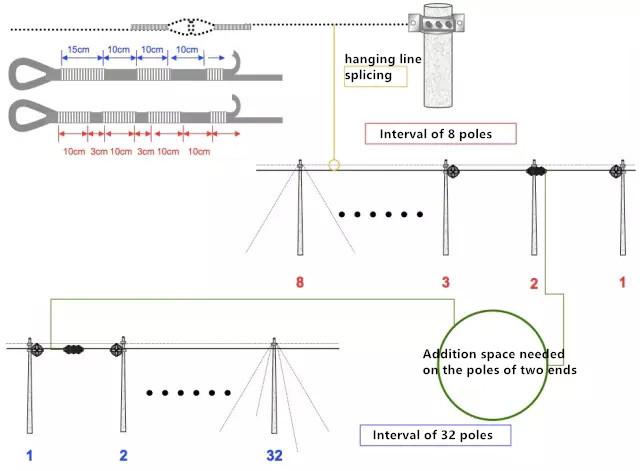- Related articles
- Optical Transceivers for Cisco WS-C2960G-48TC-L Switch
- All Cisco CWDM-GBIC-1570's information (List price, Specs, Datasheet PDF, Compatibility ma
- Optical Transceivers for Cisco WS-C2960S-24PDL-RF Switch
- New: About Cisco 4000 Series ISR Gigabit Ethernet WAN Modules
- All Cisco SFP-10G-BXU-I's information (List price, Specs, Datasheet PDF, Compatibility mat
- All Cisco CWDM-SFP-1510's information (List price, Specs, Datasheet PDF, Compatibility mat
- Difference between XENPAK and CSFP
- All Cisco GLC-BX-D's information (List price, Specs, Datasheet PDF, Compatibility matrix)
- What is SFP fiber optic transceiver?
- What is QSFP transceiver?

The overhead cable is a cable used to hang on the poles and is usually used in conjunction with hanging wires. We know that the transmission performance of the cable is highly susceptible to tension, bending radius and side pressure, so the need for extra attention when laying overhead cable. This tutorial will detail the process and procedures for installing an overhead cable.
Line construction
Before starting to lay the overhead fiber optic cable, the first thing should be to plan the line of overhead fiber optic cable, so as to effectively avoid the unexpected situation in the cable installation process. As shown below:

Routing requirements:
1. Safe and secure, the road is located in the place without flood, erosion or landslides and other places, considering the development planning, to avoid the existing development planning of the reservoir area, mining, industrial areas, roads and so on.
2. The economy is reasonable, saving investment: choose flat terrain, the distance is closer, the path is straight, reduce the angle of the bar, to avoid S-bend line routing and cutting fewer trees routing.
3. Construction and maintenance of convenience: route routing should be along the railway, river, highway, across the river, choose the narrow river, riverbed stability, hard soil, the two sides of the terrain and terrain is relatively open terrain
Pole installation
When the overhead cable line plan is finished, you need to install poles. It should be noted that the overhead cable can be laid on the existing poles, but if there are no available poles, you need to install a new pole on the line. The installation of the new poles is a relatively cumbersome work; there are a number of considerations, as shown below:
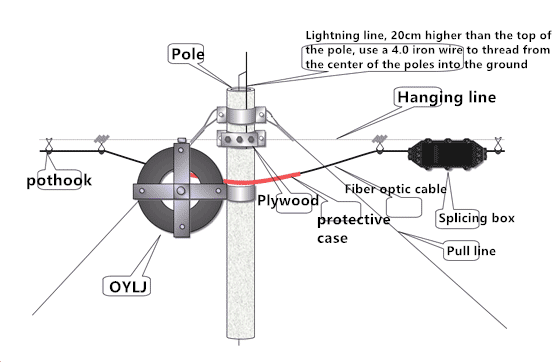
Don’t stand the pole in the below position:
(1). Where may affect the traffic or is vulnerable to the vehicle collision.
(2). Where is harmful to the underground construction.
(3). the passageway that may affect the opening and closing of the doors or windows.
(4). Unsafe places.
(5). It is necessary to pay attention to the horizontal distance and vertical distance of the empty line with other buildings.
Overhead fiber optic cable installation
Wait until the lines and poles are planned and installed, you can start laying overhead cable, and in this process, there are four main steps, including the above-mentioned pole, as well as the production of cable and hanging line, the installation of fiber optic cable As well as to provide protection for the cable, see below:
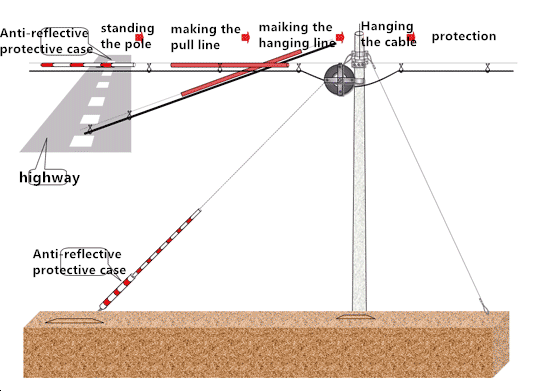
Pull line and hanging line splicing
We know that the overhead fiber optic cable line is generally longer, so the splicing of the pull cable and hanging wire are the necessary steps to install the overhead cable. Now, usually with wire winding method to complete the hanging line connection (see below), the connection can also be drawn from the following chart:
Fiber optic cable splicing
In addition to hanging wire and cable need to be spliced, the cable also needs to be spliced, which is accomplished by the splicing box. Because the cable is fragile, in the use of splicing box to connect fiber optic cables, we need to pay attention to the following:
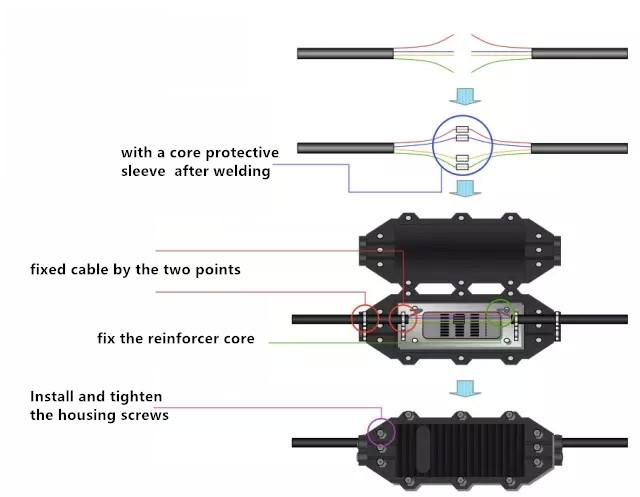
Fiber optic cable to the home(FTTH)
Many fiber entry projects are achieved through the overhead cable, there are usually two ways to rods on the overhead cable access to the room: one is from the underground, one is the overhead from the orifice home. As shown below:
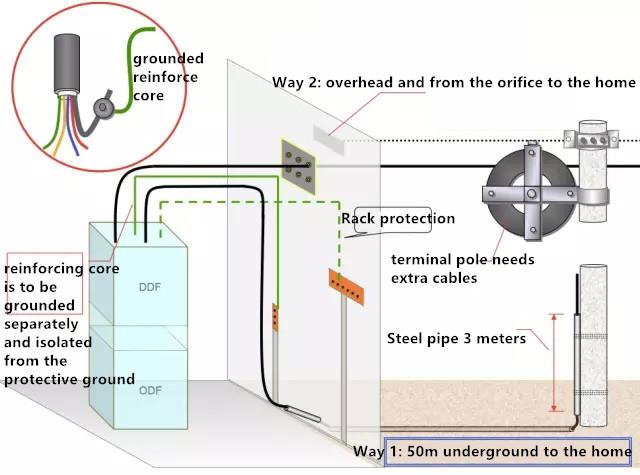
conclusion
Compared with the buried cable and pipeline cable, overhead cable is a more economical solution, do not need to dig a large-scale construction. However, the installation of the overhead fiber optic cable is a dangerous work, the contents of this tutorial are only the contents of the installation of overhead cable, the specific details also need to refer to the specific construction program.













































